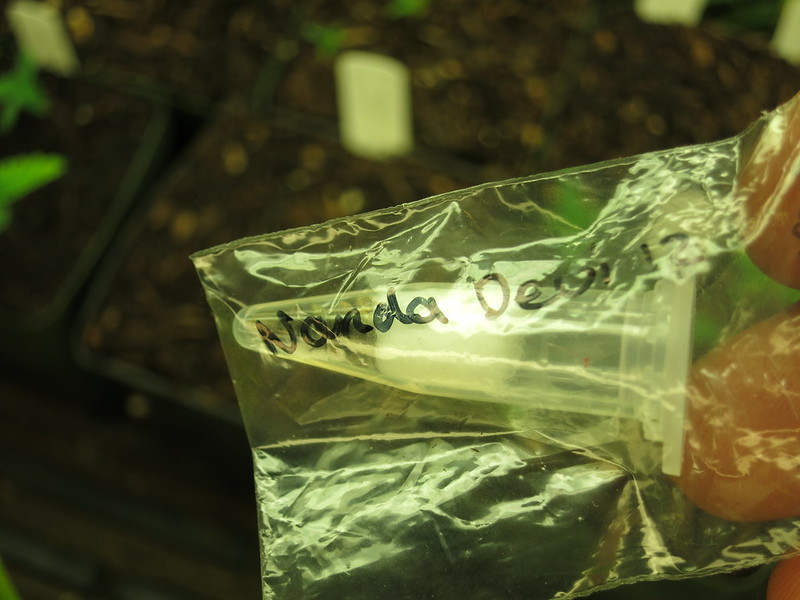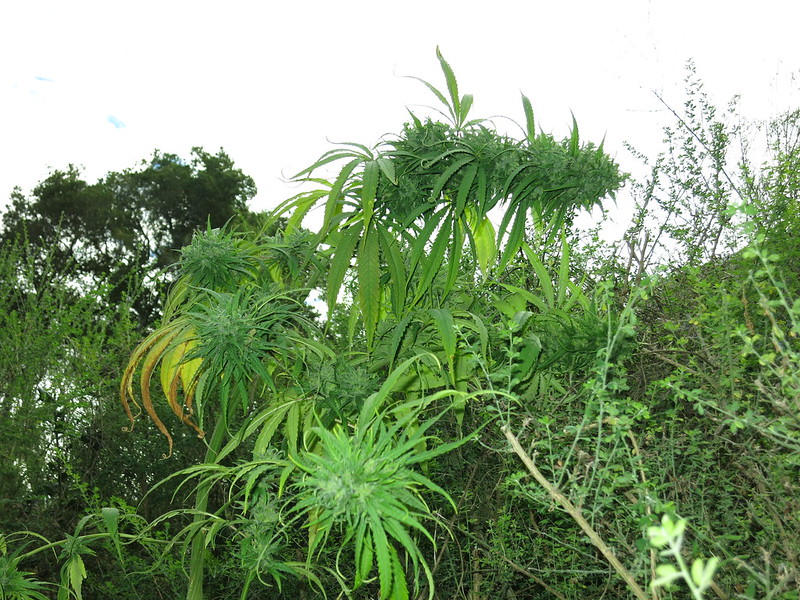The buds on Kumaoni aren't that big or dense, but the plant produces an incredible volume of branches in a relatively short period of time. If you have the space, it'll definitely produce a good yield. There's no way around the tallness, those plants turn into trees, and they're absolutely beautiful! Here's a crappy pic of a harvested Kumaoni bud:

Here's some germination results:
Highland Thai: 5/5- sprouted 4 days after popping them, indicating fresh, well preserved seeds. these are growing as though they have hybrid vigor and are really strong plants:

Ukhrul:5/7 seeds sprouted (a few sprouted after the photo was taken), good enough for me. Took about 7 days before the first seed popped up, maybe another will germinate in the next few days. Seeds were carefully stored in the refrigerator in airtight containers:

Parvati: 8/12 sprouted. these took about 6 days before the first sprouted. Not good, not bad, probably enough to get an idea about the strain:

Kerala-5/5 sprouted. Very viable, these uniformly all popped open 4 days after sowing:


Here's some germination results:
Highland Thai: 5/5- sprouted 4 days after popping them, indicating fresh, well preserved seeds. these are growing as though they have hybrid vigor and are really strong plants:

Ukhrul:5/7 seeds sprouted (a few sprouted after the photo was taken), good enough for me. Took about 7 days before the first seed popped up, maybe another will germinate in the next few days. Seeds were carefully stored in the refrigerator in airtight containers:

Parvati: 8/12 sprouted. these took about 6 days before the first sprouted. Not good, not bad, probably enough to get an idea about the strain:

Kerala-5/5 sprouted. Very viable, these uniformly all popped open 4 days after sowing:











